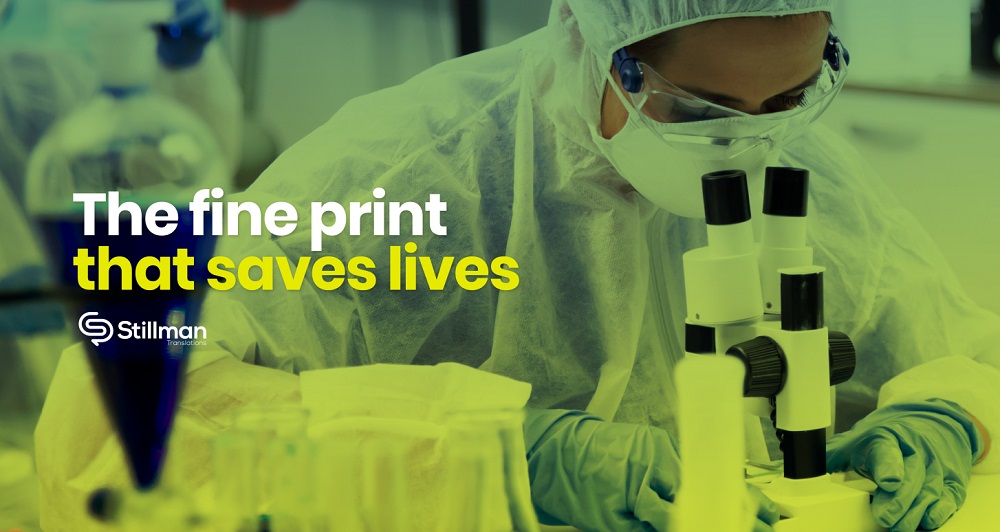
Covid vaccines, new pharmaceutical solutions, pills, creams and tests. They all have in common at least one thing: they need translation.
Innovations in the pharmaceutical industry are game changers, but so are safety measures
Covid vaccines, new pharmaceutical solutions, pills, creams and tests. They all have in common at least one thing: they need translation.
Innovations in the pharmaceutical industry are game changers. They can, from one day to another, represent life turning events. A vaccine could change habits in a city (as seen post pandemic), and a medicine could aid a whole city. A plague could be stopped by a change in formulas. But as testing becomes widespread, cautionary measures become crucial. Like the fine print included in every product and procedure. Its proper translation is no joke.
Legislation and regulation
The pharmaceutical industry is an ever-evolving field that requires high-quality translation services. Why? To ensure accuracy in communication and regulatory compliance. Without accurate translations, pharmaceutical companies struggle to comply with guidelines and regulations, leading to costly errors and delays in the production and distribution of medicines. If a translation fails to meet local standards, the drug may not be approved for sale or use as a safety measure.
Companies must be able to communicate effectively with potential customers, vendors, and regulatory agencies around the world. This includes the translation of technical documents, such as patient information leaflets, clinical trial protocols, and marketing materials. Technicalities and wording matter greatly here, so it requires a specialized skill set and knowledge of the pharmaceutical industry. It’s not enough to be qualified and well versed in the target language, there has to be a close knit relation with the field.
Regulations can be categorized
This compliance responds to both regulations and legislation. Legislation makes reference specifically to laws and enables the government to issue regulations based on them.
Regulations on the other hand are the rules established by an agency that interprets the laws to facilitate their practical implementation. Unlike laws, which go through lengthy processes, they can be passed more quickly. Some regulatory agencies are for example the FDA in the United States, TGA in Australia, MHRA in the United Kingdom, and MCC in South Africa, to name a few.
Regulations can be categorized in different instances of the pharmaceutical launches and innovations:
- Licensing
- Registration
- Development
- Manufacturing
- Marketing
- Labeling
In addition to regulatory compliance, accurate translations are necessary to ensure the success of marketing campaigns. Pharmaceutical companies often need to create materials that can be understood in multiple languages. All the way from brochures and websites to promotional materials. An inaccurate translation could lead to misunderstandings or miscommunication, resulting in a failed marketing campaign. And possibly an unhealthier community.
Finally, accurate translations are essential for building strong relationships with customers and vendors. They build trust and understanding. Misunderstandings in an already complex and regulated market caused can damage business relationships and cost companies valuable time and money.
Fine print and safety
From the development of new drugs to treatments and procedures, the industry is constantly pushing the boundaries of what is possible. In recent years, we have seen a number of exciting breakthroughs and advances that are changing the way we approach healthcare.
Companies are using cutting-edge technology to create new treatments for a variety of different illnesses and conditions. In addition to these new treatments, researchers are also discovering new ways to improve existing treatments. Not to mention the use of digital technology for more personalized treatments for patients.
All this is great news. But it’s a lot to digest information wise. When in the hands of medical experts, there are less risks (though it’s never something to take lightly). They will most likely be familiar with the product or ingredients at hand. But when in the hands of consumers, the fine print in medicine contains important information about the risks and side effects of any particular medicine. This fine print ensures patients are informed about the potential risks and benefits associated with the medicine. And people have the right to make informed decisions about their treatment. Not to mention, it helps to protect the manufacturer from legal liability if something goes wrong with the medicine.
It’s even better if the fine print is available in more than one language. Especially in countries that have a multicultural background. We have first hand experience working with different health giants to provide information, clarity and an amazing team of language experts to work hand in hand with your company.
If you would like to learn more about this topic go to “Can translation lead to innovation in healthcare?”
